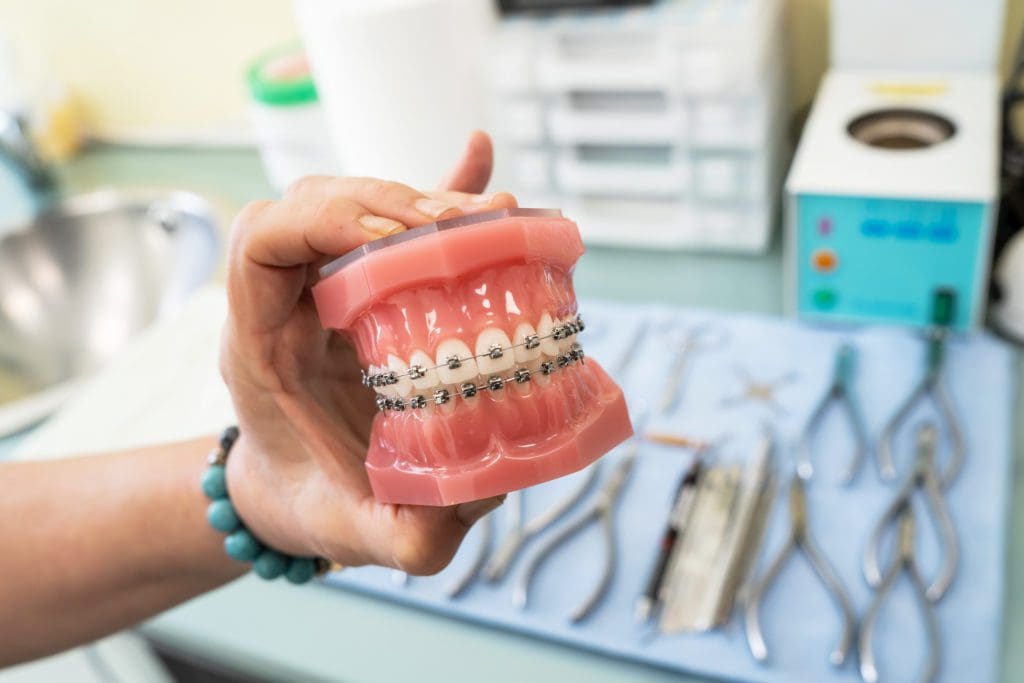Why Cumming Invisalign is the Perfect Selection for a Discreet Orthodontic Remedy
Why Cumming Invisalign is the Perfect Selection for a Discreet Orthodontic Remedy
Blog Article
Comprehensive Guide to Orthodontics Treatments for Remedying Dental Imbalances
Comprehending the details of each procedure, including their systems, advantages, and possible drawbacks, is important in making notified choices concerning one's orthodontic therapy. As we navigate through the extensive overview to orthodontic treatments for fixing dental misalignments, the elaborate details of each approach will certainly unfold, shedding light on the path toward a harmonious and useful dental alignment.
Orthodontic Procedures Summary

Along with standard braces and clear aligners, orthodontists might also advise various other interventions like headgear, palatal expanders, or retainers to address details positioning problems (invisalign). These procedures are tailored to each person's special requirements and may entail a combination of treatments to achieve the wanted outcomes. Regular changes and tracking are essential components of orthodontic treatment to ensure progression is on track and to make any kind of needed modifications in the process. By going through orthodontic treatments, patients can not just accomplish a straighter grin but additionally improve their total oral health and wellness and function.
Traditional Braces: Just How They Work
When taking into consideration orthodontic therapies for oral imbalances, standard dental braces stick out as a time-tested method for fixing teeth positioning. Traditional braces include braces, cables, and bands that collaborate to use constant pressure on the teeth, gradually relocating them into the preferred alignment. The brackets are affixed to the teeth utilizing a special adhesive, and the wires are threaded via the braces. By readjusting the stress of the cords, orthodontists can regulate the direction and force related to each tooth, directing them into correct alignment with time.
As pressure is applied to the teeth with the braces, the bone bordering the teeth is reshaped to support the brand-new tooth placements. Patients will require routine adjustments at the orthodontist's office to make sure the dental braces proceed to apply the proper stress for efficient teeth motion.
Invisible Aligners: Benefits And Drawbacks
These clear, custom-made trays are practically unnoticeable when put on, making them an attractive option for individuals seeking a more aesthetically pleasing orthodontic therapy. Patients can eliminate the aligners before eating or brushing their teeth, reducing the risk of food getting stuck in the home appliance and streamlining the cleansing process.

Surgical Orthodontic Options
Surgical interventions in orthodontics present viable options for resolving intricate dental imbalances that may not be effectively solved via traditional orthodontic treatments. While conventional braces and undetectable aligners can correct several orthodontic concerns, particular cases need surgical treatment to achieve optimal results. Surgical orthodontic options are commonly advised for serious malocclusions, considerable jaw inconsistencies, and cases where the underlying bone framework needs modification to attain proper positioning.
One common surgical orthodontic treatment is orthognathic surgical treatment, which entails repositioning the jaws to deal with practical issues such as problem talking or eating. This surgery is commonly executed in cooperation with an orthodontist that assists align the teeth before and after the procedure. Surgical orthodontics may additionally entail treatments to expose impacted teeth, remove excess periodontal cells, or improve the jawbone to produce a more unified face account.
Prior to taking into consideration medical orthodontic choices, individuals undergo an extensive evaluation to determine the need and potential advantages of such interventions. cumming aligners. While surgery may appear daunting, it can substantially improve both the function and appearances of braces the smile in situations where traditional orthodontic treatments fail
Retainers and Post-Treatment Treatment

Post-treatment treatment involves complying with the orthodontist's directions diligently. This may consist of correct dental health practices, attending follow-up consultations, and using the retainers as prescribed. Failing to conform with post-treatment care directions can lead to relapse, where the teeth slowly return in the direction of their initial positions. Consistent retainer wear, great oral health, and regular oral check-ups are important for preserving the outcomes achieved via orthodontic surgical treatment and guaranteeing the lasting security of the corrected oral placement.
Final Thought
In final thought, orthodontic procedures use various choices for fixing oral imbalances. Surgical orthodontic alternatives are readily available for much more serious imbalances. In general, orthodontic procedures can efficiently enhance dental health and aesthetic look.
As we navigate through the detailed overview to orthodontic procedures for remedying dental imbalances, the complex details of each method will unfold, losing light on the course toward a useful and harmonious dental alignment. - cumming orthodontist
One of the most common orthodontic treatments is the usage of dental braces, which consist of steel braces and wires that apply mild stress to progressively move teeth into the preferred position.When taking into consideration orthodontic treatments for oral misalignments, standard dental braces stand out as a tried and true technique for dealing with teeth positioning. In addition, unseen aligners may not be suitable for complicated orthodontic problems that need more substantial teeth motion, as they are typically advised for light to modest situations. Retainers are customized orthodontic devices created to hold teeth in their remedied placements after the completion of orthodontic therapy.
Report this page